SQL Server Migration Success Starts with Clear, Confident Project Management

Editor’s Note: Last week, Luke Campbell shared the technical side of what made a recent SQL Server migration so successful. This is the second and final part of the series, featuring a Q&A with the project manager who successfully kept the migration on track, on time, and coordinated across teams.
Chelsea Moore, Client Success Manager, was the project manager for our recent migration of 1,200+ SQL Server databases. The technical execution was impressive—it was done with fewer than three hours of downtime and created an 84% drop in storage costs. In our Q&A, Chelsea shares how she helped steer the project to success through clear communication, thoughtful structuring, and the kind of calm leadership that makes even the biggest projects feel seamless.
The Power of Preparation
Q: When did planning for this migration begin, and what were the first logistical steps?
Planning began in October 2024. The client came to The SERO Group with a vision for their upgraded environment, but through discovery, the team found that their initial plan didn’t completely align with their performance or budget goals. They worked collaboratively to reframe the direction—resulting in a more streamlined architecture that exceeded expectations.
This planning phase, which extended into January 2025, was the longest portion of the project. “We spent 12 weeks just on planning and design,” Chelsea said. “That set the stage for everything that followed.”
Q: What helped you most in managing such a large effort?
Chelsea points to a foundational resource: The SERO Group’s standardized migration checklist and project template. “Even though every migration is different, having that predefined framework let me focus on strategic decisions instead of just sequencing tasks. It gave us the structure to stay on track and the flexibility to tailor it to the client’s needs.”
Building Trust Through Communication
Q: Were there any communication challenges? How did you overcome them?
The client had faced delays during previous migrations and understandably wanted to prevent any possible issues during this one. To address their concerns, Chelsea worked on establishing transparency and leaning into structured collaboration.
“We started with biweekly calls but increased the frequency to weekly as we neared execution,” she explained. These weren’t working sessions—they were status checkpoints where decisions were made, issues were raised, and next steps were confirmed.
Q: How were the client’s teams kept informed during the maintenance windows?
Because some stakeholders weren’t able to join every live call, Chelsea adapted her tools mid-project. “I moved our tracking from Monday.com to Excel so I could easily take screenshots of our live checklist and post them in Teams. That way, everyone—whether on the call or not—knew exactly where we were.”
Structuring for Execution
Q: What did the final 48 hours before the first migration look like?
Two days before the first migration, Chelsea organized and led a formal Go/No-Go call. The team reviewed all open action items and confirmed that nothing would delay the plan. At the end of the meeting, Chelsea asked everyone directly, “Is there any risk that would make us postpone?”
This clarity, paired with a culture of open communication, ensured that no assumptions were left unaddressed. If anyone had a concern, it would be brought to light and resolved before the cutover began.
Q: How did you keep the actual migration on track?
“We captured start and stop times for each task,” she said. “That helped us measure not just overall duration, but exactly how long each part took, which helped refine our estimates for the next weekend.” In the end, that discipline paid off: each weekend ran smoother than the last. The final and largest group of databases migrated in under three hours—faster than either of the previous weekends.
Finishing Strong
Q: What advice would you give someone managing a project like this for the first time?
“Don’t try to know everything,” Chelsea said. “Let your technical leads own the technical side. My job wasn’t to understand every backup script—it was to make sure Luke had what he needed to be successful.”
She also emphasized the importance of asking questions, even if they seem obvious. “You’re not helping the project by staying quiet when something doesn’t feel right. Ask the thing no one else is asking—someone may have forgotten, or it may spark a helpful discussion.”
Q: What did the final close-out meeting look like?
It wasn’t just a victory lap. Chelsea began by checking in on the environment—was everything still running smoothly? (It was.) The client reported their CPU usage had dropped by 5–10% across the board, a measurable performance win. Then she walked through a structured project retrospective: what went well, what could be improved, and what needed follow-up.
“We wanted to make sure every open item had a home,” Chelsea said. “Whether that was a new ticket, a follow-up project, or something handed off to our SeroShield monitoring team.”
The Intangibles of Success
Q: What moment made you feel the proudest?
“That final weekend,” she said without hesitation. “It had the most databases and took the least amount of time. It felt like all of our work to get more efficient each weekend really paid off.”
Q: What is something that readers of the technical post may not yet appreciate about this migration?
“The amount of back-end coordination,” she said. “It was 12 weeks of planning before the first database ever moved. That’s what made it feel easy.”
Q: What does this project say about The SERO Group?
“We show up as true partners. We walk alongside the client and make decisions together. That’s what builds trust—and that’s why this went so well.”
Bringing It All Together
This migration was a case study in how proactive project management, thoughtful communication, and structured planning can bring clarity and confidence to even the most complex technical challenges. Chelsea didn’t just get the job done—she also made it feel calm, transparent, and collaborative every step of the way.
If your organization is facing a high-stakes SQL Server migration, don’t underestimate the power of strong project management. Schedule a no-obligation discovery call with us to learn how we can help.

